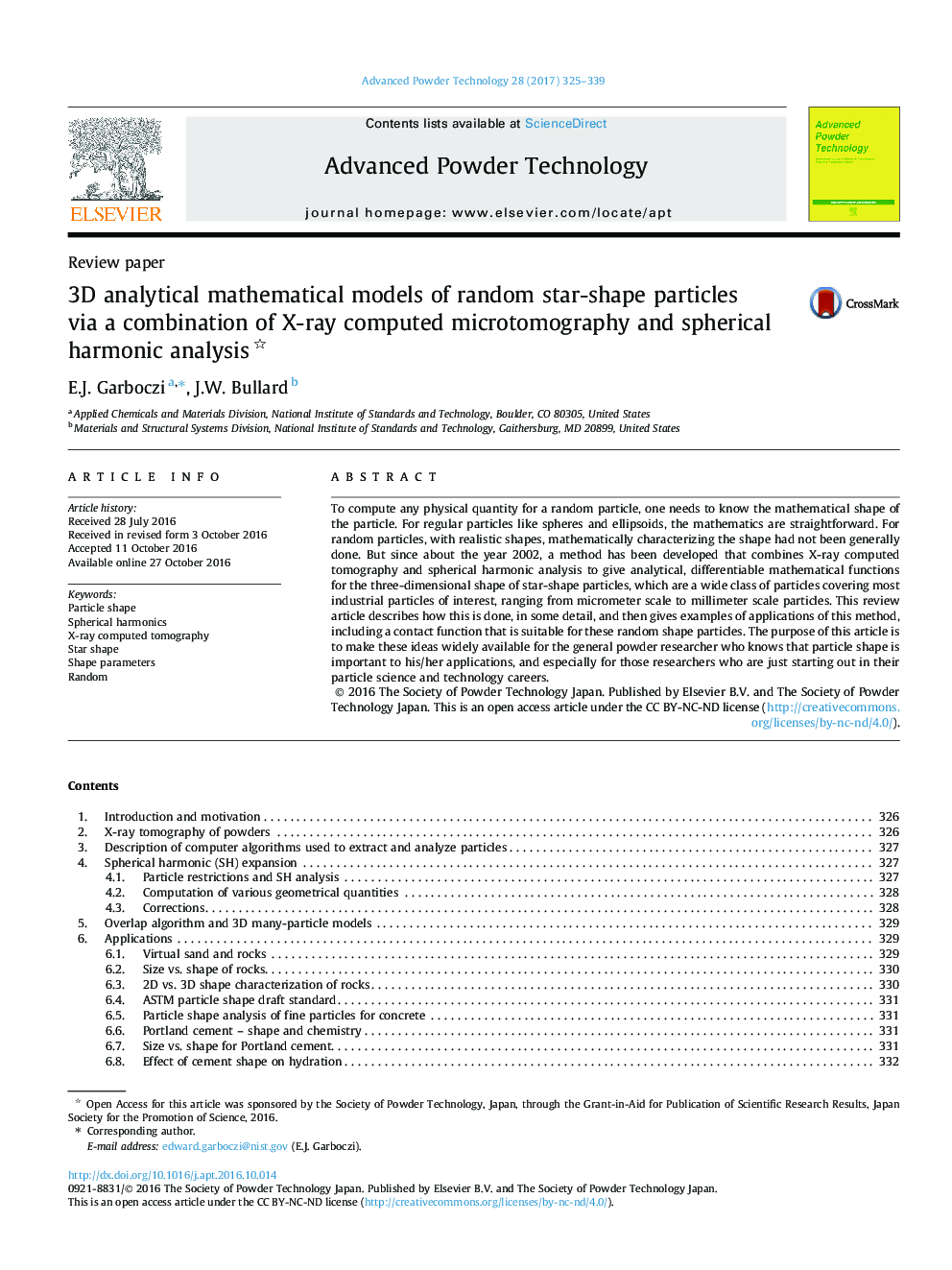| کد مقاله | کد نشریه | سال انتشار | مقاله انگلیسی | نسخه تمام متن |
|---|---|---|---|---|
| 6464606 | 1362207 | 2017 | 15 صفحه PDF | دانلود رایگان |

- Three dimensional particle shape analysis.
- Combination of X-ray CT and spherical harmonic analysis.
- Many applications to star-shape particles.
To compute any physical quantity for a random particle, one needs to know the mathematical shape of the particle. For regular particles like spheres and ellipsoids, the mathematics are straightforward. For random particles, with realistic shapes, mathematically characterizing the shape had not been generally done. But since about the year 2002, a method has been developed that combines X-ray computed tomography and spherical harmonic analysis to give analytical, differentiable mathematical functions for the three-dimensional shape of star-shape particles, which are a wide class of particles covering most industrial particles of interest, ranging from micrometer scale to millimeter scale particles. This review article describes how this is done, in some detail, and then gives examples of applications of this method, including a contact function that is suitable for these random shape particles. The purpose of this article is to make these ideas widely available for the general powder researcher who knows that particle shape is important to his/her applications, and especially for those researchers who are just starting out in their particle science and technology careers.
A sampling of the eight different cements, showing the range of particle shapes that can be encountered in ordinary Portland cement. The 3D shape can be quantified using a combination of X-ray computed tomography and spherical harmonic analysis. 3D images can then be constructed from this analysis, which are shown in the above figure. Any shape parameter, including all surface and volume integrations, can now be performed for random star-shape particles, since an analytical description of their random shape is created by the spherical harmonic analysis.95
Journal: Advanced Powder Technology - Volume 28, Issue 2, February 2017, Pages 325-339